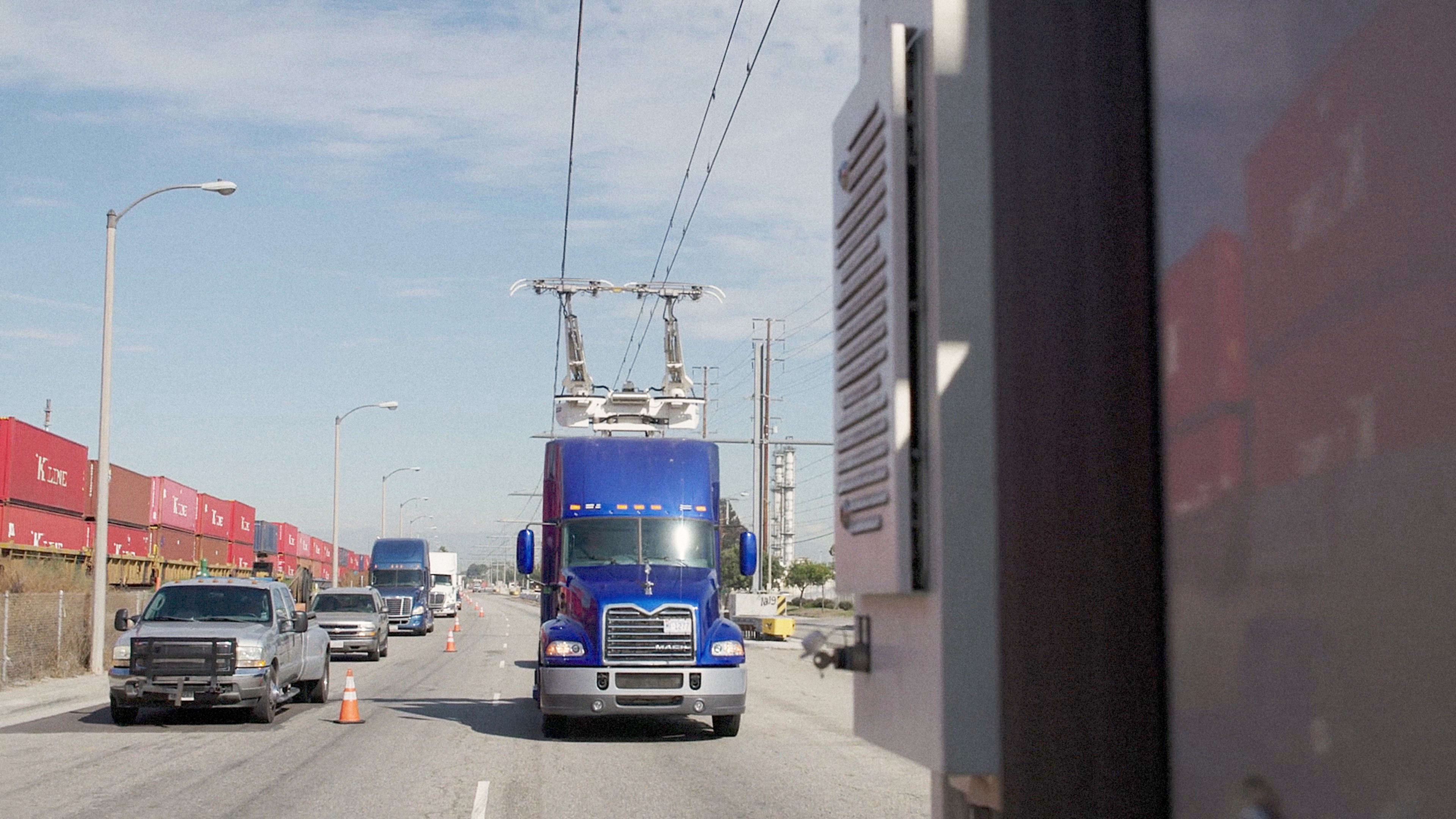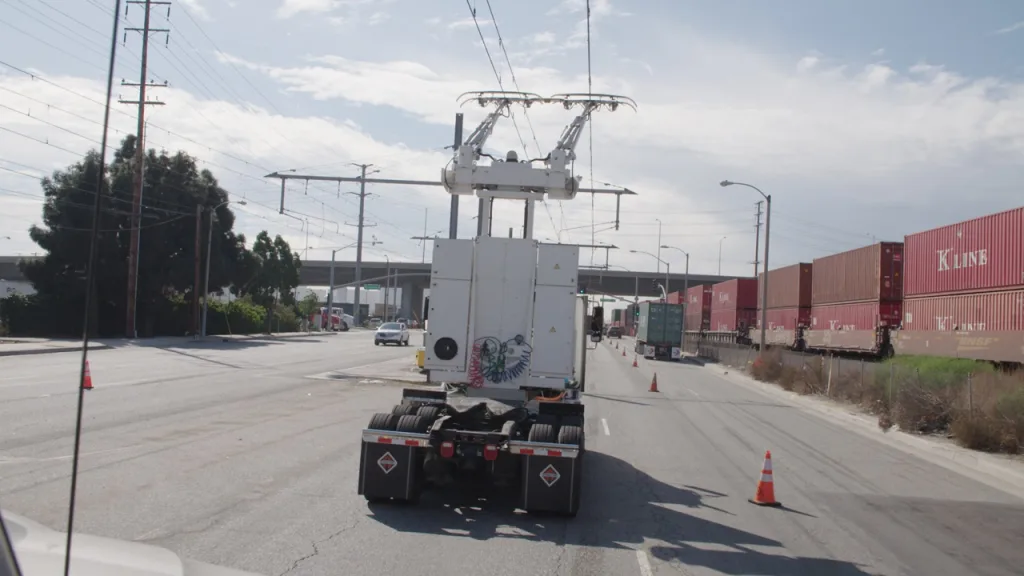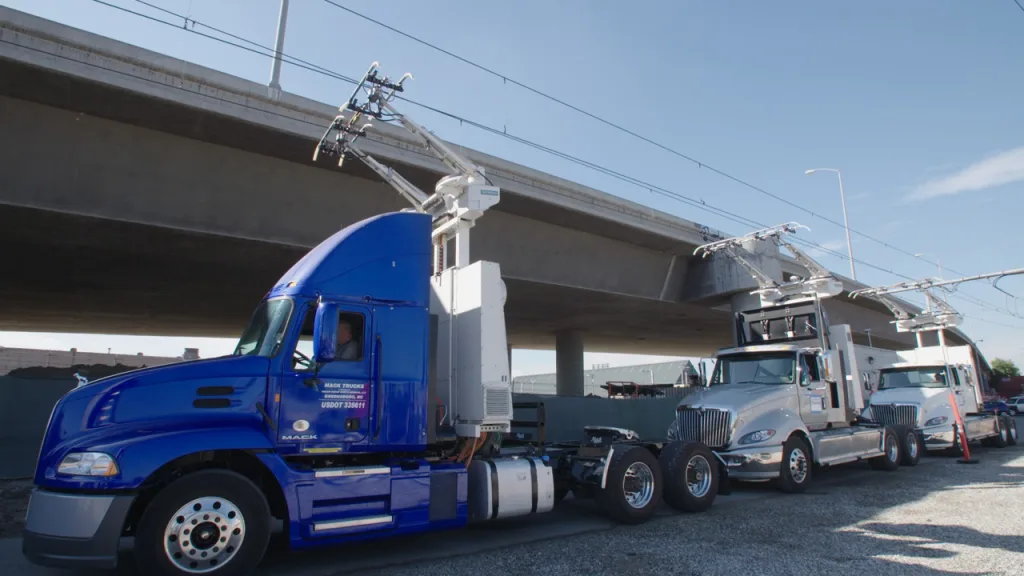Near the ports of Los Angeles and Long Beach, South Alameda Street is typically filled with trucks–and smog. But a one-mile stretch of the trucking route is now also a demo site for new electric highway technology.
Overhead, a system of overhead wires–similar to those used for electric streetcars–supplies power. Three big-rig trucks, equipped for the pilot, use equipment mounted on top to automatically reach up to connect to the wires and run on electricity.

For freight companies, using electric trucks can also reduce operating costs. “Diesel motors require a lot of maintenance, and the electric motor is more or less maintenance-free,” Thon says.
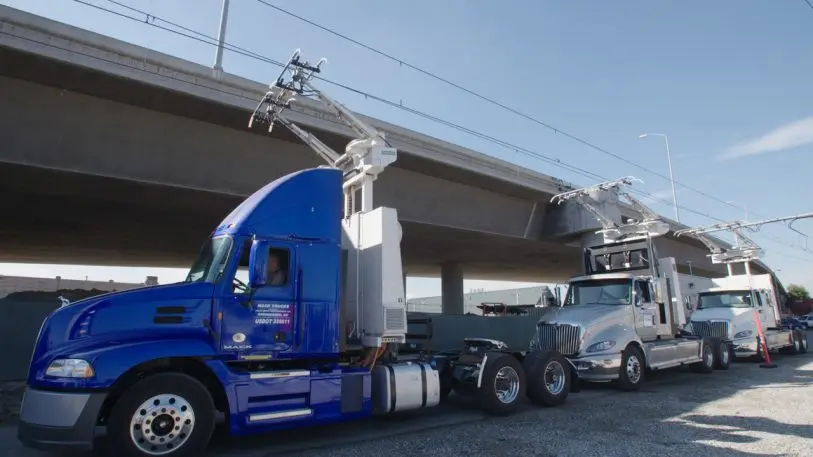
“Because [the trucks] are so heavy, I think they would only run for a few miles and then it would take them another 30 minutes or one hour to charge batteries so that they can go another distance,” Thon says. “With this technology, you permanently feed energy into the truck.”
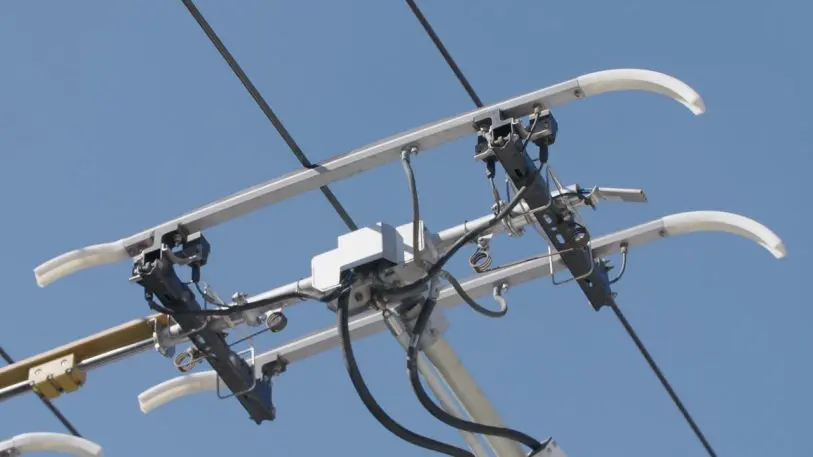
“You need to make a business case, but I’m convinced that there are many other locations, apart from this one in Los Angeles, where it would be really worthwhile to install these kinds of projects,” Thon says. The South Coast Air Quality Management District, which partnered on the test near the ports, is considering whether to extend the pilot beyond the end of this year, and whether to expand the technology to a longer stretch of road.
In California, if it grows, the technology could be one piece of the state’s plan to shift to an emissions-free freight system by 2050. Heavy-duty trucks are already the leading source of smog-forming emissions in Southern California, and, without a change, the problem will get worse; by 2050, freight transportation in the U.S. will likely double.
Correction: This article has been updated to reflect that Siemens makes electric bus infrastructure, not electric buses.
Recognize your brand’s excellence by applying to this year’s Brands That Matter Awards before the early-rate deadline, May 3.
